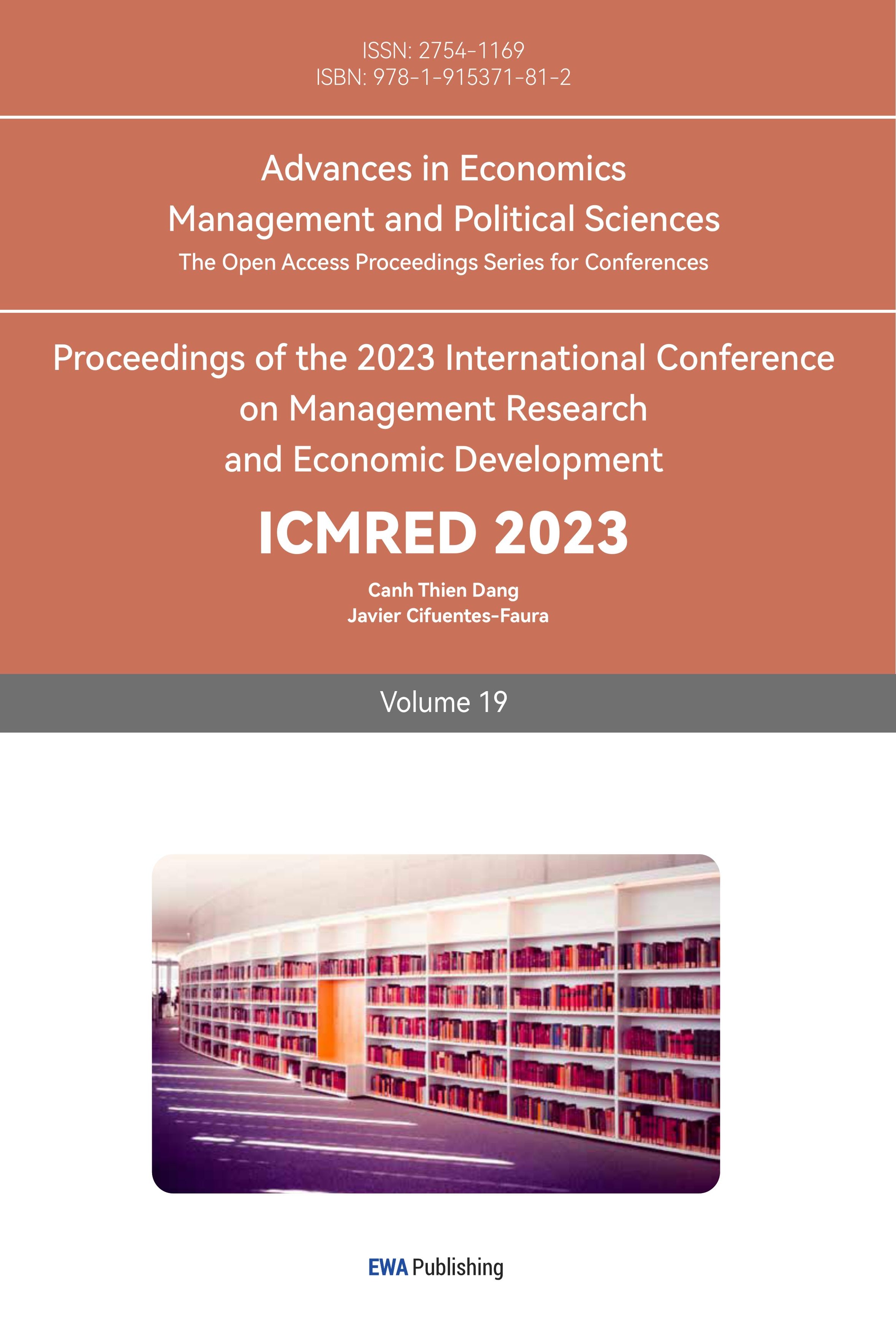References
[1]. Zhang, F. (2010). The effect of high-frequency trading on stock volatility and price discovery. SSRN eLibrary.
[2]. Zhang, L. (2006) Efficient estimation of stochastic volatility using noisy observations: a multi-scale approach", Bernoulli, 12, 1019-1043.
[3]. Heston, S. (1993). A closed-form solution for options with stochastic volatility with applications to bonds and currency options. Review of Financial Studies, 6(2), 327–343.
[4]. Guilbaud, F., & Pham, H. (2013). Optimal high-frequency trading with limit and market orders. Quantitative Finance, 13(1), 79-94.
[5]. Engle, R., Ghysels, E., & Sohn, B. (2008). On the economic sources of stock market volatility. SSRN Electronic Journal.
[6]. Bollerslev, T., & Zhou, H. (2002). Estimating stochastic volatility diffusion using conditional moments of integrated volatility. Journal of Econometrics, 109(1), 33–65.
[7]. Sun, M. (2016). Modeling volatility using high-frequency data (Unpublished doctoral dissertation). UCLA, Los Angeles, CA.
[8]. Ellickson, B., Sun, M., Whang, D., & Yan, S. (2018). Estimating a local Heston model. SSRN Archive.
[9]. Schwert, G.W. (1989). Why does stock market volatility change over time? The Journal of Finance, 44(5), 1115–1153.
[10]. Blitz, D., & van Vliet, P. (2007). The volatility effect: Lower risk without lower return. Journal of Portfolio Management, 102-113.
Cite this article
Gao,Y. (2023). Pattern Recognition of Stock Returns in the Very Short Run Leveraging High-Frequency Financial Data. Advances in Economics, Management and Political Sciences,19,353-365.
Data availability
The datasets used and/or analyzed during the current study will be available from the authors upon reasonable request.
Disclaimer/Publisher's Note
The statements, opinions and data contained in all publications are solely those of the individual author(s) and contributor(s) and not of EWA Publishing and/or the editor(s). EWA Publishing and/or the editor(s) disclaim responsibility for any injury to people or property resulting from any ideas, methods, instructions or products referred to in the content.
About volume
Volume title: Proceedings of the 2023 International Conference on Management Research and Economic Development
© 2024 by the author(s). Licensee EWA Publishing, Oxford, UK. This article is an open access article distributed under the terms and
conditions of the Creative Commons Attribution (CC BY) license. Authors who
publish this series agree to the following terms:
1. Authors retain copyright and grant the series right of first publication with the work simultaneously licensed under a Creative Commons
Attribution License that allows others to share the work with an acknowledgment of the work's authorship and initial publication in this
series.
2. Authors are able to enter into separate, additional contractual arrangements for the non-exclusive distribution of the series's published
version of the work (e.g., post it to an institutional repository or publish it in a book), with an acknowledgment of its initial
publication in this series.
3. Authors are permitted and encouraged to post their work online (e.g., in institutional repositories or on their website) prior to and
during the submission process, as it can lead to productive exchanges, as well as earlier and greater citation of published work (See
Open access policy for details).
References
[1]. Zhang, F. (2010). The effect of high-frequency trading on stock volatility and price discovery. SSRN eLibrary.
[2]. Zhang, L. (2006) Efficient estimation of stochastic volatility using noisy observations: a multi-scale approach", Bernoulli, 12, 1019-1043.
[3]. Heston, S. (1993). A closed-form solution for options with stochastic volatility with applications to bonds and currency options. Review of Financial Studies, 6(2), 327–343.
[4]. Guilbaud, F., & Pham, H. (2013). Optimal high-frequency trading with limit and market orders. Quantitative Finance, 13(1), 79-94.
[5]. Engle, R., Ghysels, E., & Sohn, B. (2008). On the economic sources of stock market volatility. SSRN Electronic Journal.
[6]. Bollerslev, T., & Zhou, H. (2002). Estimating stochastic volatility diffusion using conditional moments of integrated volatility. Journal of Econometrics, 109(1), 33–65.
[7]. Sun, M. (2016). Modeling volatility using high-frequency data (Unpublished doctoral dissertation). UCLA, Los Angeles, CA.
[8]. Ellickson, B., Sun, M., Whang, D., & Yan, S. (2018). Estimating a local Heston model. SSRN Archive.
[9]. Schwert, G.W. (1989). Why does stock market volatility change over time? The Journal of Finance, 44(5), 1115–1153.
[10]. Blitz, D., & van Vliet, P. (2007). The volatility effect: Lower risk without lower return. Journal of Portfolio Management, 102-113.









